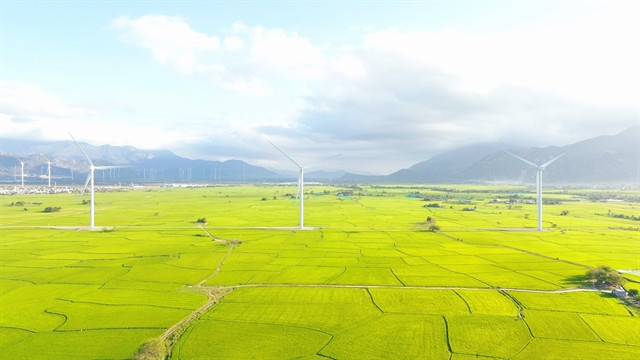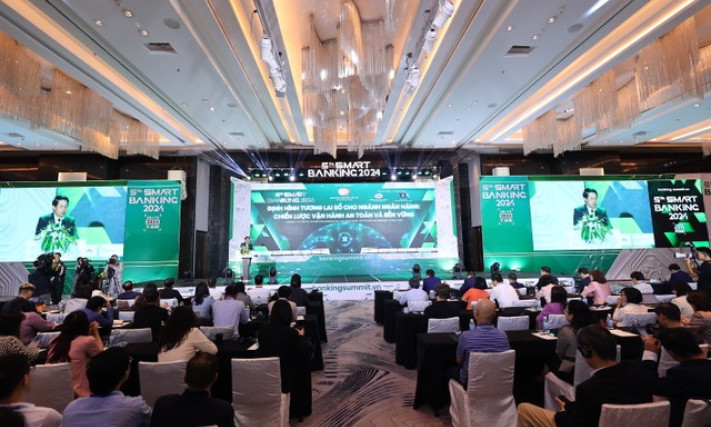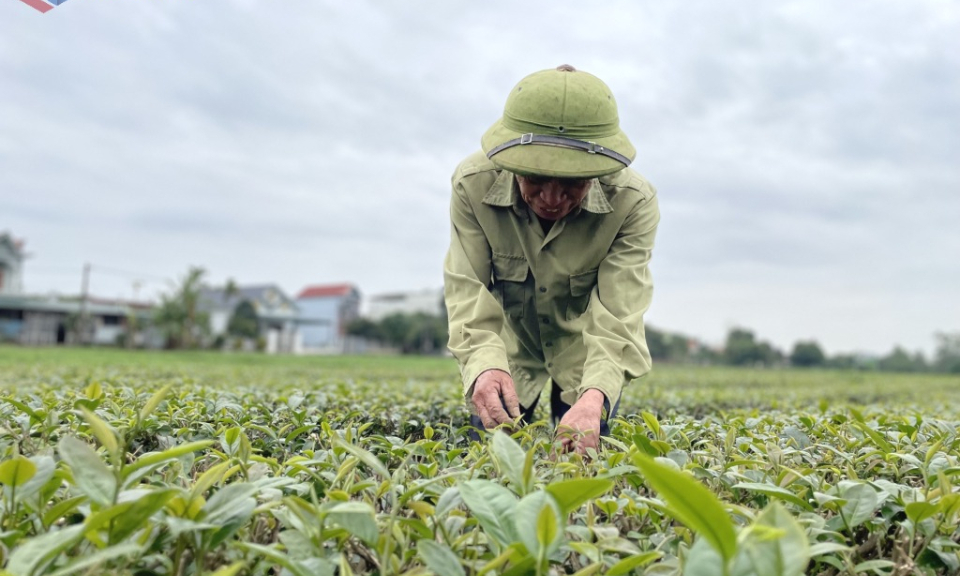Green finance fuels push for sustainable growth
As Việt Nam accelerates its transition toward a green economy, green finance is becoming a central pillar of the country’s development strategy - essential to unlocking the capital needed to meet its net-zero goals and ensure a just, inclusive shift to sustainability.
As Việt Nam accelerates its transition toward a green economy, green finance is becoming a central pillar of the country’s development strategy - essential to unlocking the capital needed to meet its net-zero goals and ensure a just, inclusive shift to sustainability.
Green finance - encompassing loans, bonds and investment flows for sustainable energy, infrastructure and climate resilience - is now crucial to Việt Nam’s efforts to achieve its net-zero emissions target by 2050. At COP26, Prime Minister Phạm Minh Chính reaffirmed this ambition, acknowledging the need for structural changes and unprecedented financial mobilisation.
Delivering on these climate commitments will require sweeping transitions across energy, transport, construction and agriculture. More than a funding mechanism, green finance is now a test of Việt Nam’s readiness for climate leadership, economic resilience and deeper integration with sustainable global supply chains.
In Việt Nam, green finance is most often channelled into renewable energy (especially wind and solar), energy efficiency upgrades in manufacturing, green transport, sustainable agriculture, waste and wastewater management and eco-friendly construction. These sectors not only reduce emissions but also offer long-term job creation and more resilient livelihoods.
According to a 2024 CleanTech Asia report, Việt Nam will need at least US$368 billion in green investment through 2040 to achieve its climate targets. This investment shortfall underscores the urgency of mobilising public and private capital - and of building investor confidence in a robust green finance ecosystem.
As of March 31, 2024, outstanding green credit in Việt Nam reached approximately VNĐ636.96 trillion ($25 billion), accounting for 4.5 per cent of total outstanding credit, according to the State Bank of Vietnam (SBV). This marks a nine-fold increase since 2015, with an average annual growth rate of nearly 100 per cent. Medium and long-term loans account for 77 per cent of this total green debt.
Green credit is primarily directed to renewable energy (47 per cent), green agriculture (32 per cent), clean water (11 per cent), and forestry. Despite this growth, the scale remains modest compared to the capital needed for a comprehensive green transformation.
Deputy Governor of the SBV Đào Minh Tú said that many banks have begun building internal frameworks to manage environmental and social risks, supported by green capital sources and international technical assistance.
“The SBV will continue improving the legal framework to promote green credit and integrate ESG (Environmental, Social, and Governance) factors across the banking system,” he said.
According to the SBV, 80–90 per cent of commercial banks have adopted ESG criteria in some form, while nearly 50 per cent have established environmental risk management departments. Leading banks such as BIDV, SHB and VPBank are also embedding ESG into their operations.
Still, challenges remain.
“Accessing and managing green capital requires rigorous internal standards,” said a CEO of a major bank. “By 2025, all credit institutions will need to assess environmental risks in lending and apply environmental standards to credit projects.”
The 2025 White Book from the European Chamber of Commerce (EuroCham), launched last week, reveals that 40 per cent of Vietnamese banks have begun integrating ESG criteria into their lending practices, while 76 per cent now factor ESG into risk management.
With Việt Nam’s bank-mediated trade finance market valued at $150 billion, this shift holds real weight. However, gaps remain: only 29 per cent of banks support climate-related financing and nearly half (47 per cent) lack systems to track their sustainability-linked activities.
EuroCham noted several roadblocks that still hinder sustainable trade finance in Việt Nam. Only around 25 per cent of Vietnamese exporters are familiar with sustainable trade finance tools, limiting adoption. Regulatory gaps persist, as Việt Nam lacks comprehensive guidelines for sustainable trade finance, unlike the EU.
Despite these hurdles, green financial products including green bonds have gained attention. In 2023, green bond issuance reached S$1 billion, highlighting strong expansion potential. Technological advances such as blockchain are also improving transparency, while 40 per cent of Vietnamese banks have begun integrating ESG into lending practices, to support sustainable trade.
EuroCham and partners like IFC are providing technical and financial support to expand the use of green trade finance products and develop local capacity. EuroCham recommends expanding green instruments like sustainable letters of credit and insurance products, while also building a national green export strategy.
“Việt Nam can base its criteria on the EU’s green taxonomy and learn from Singapore’s Green and Sustainable Trade Finance Framework (GTF),” EuroCham suggested.
The group also called for tax incentives, subsidies or preferential interest rates for major banks to promote digital platforms and green fintech applications that align with export growth and job creation.
Green bonds and investor confidence
To fill the investment gap, green bonds are gaining traction. In 2023, TPBank issued VNĐ1.2 trillion in green bonds to fund renewable energy and eco-agriculture. The Ministry of Finance is drafting a framework for sovereign green bonds to access global ESG capital markets.
Đặng Quyết Tiến, Director of the Department of Corporate Finance under the Ministry of Finance, said that green bonds are a key part of their strategy to mobilise long-term funds for climate and environmental objectives. They want to create a vibrant green capital market.
Private enterprises are also beginning to tap into green capital. Phúc Sinh Group has received more than VNĐ1 trillion ($38.8 million) from international financial institutions. Eighty per cent of the funding has been used to build factories. New technologies are implemented for green projects in line with the sustainable development strategy that Phúc Sinh has pursued for over a decade.
“Green credit is more than just capital,” said Phan Minh Thông, Chairman of Phúc Sinh.
“It brings added value, improves business standards and opens new investment opportunities.”
He noted that working with European funds gave his company free advisory support on ESG standards, which helped attract additional green investors.
“It’s a long journey, but one that pays off through better governance and international recognition.”
While large corporates are making inroads, small and medium-sized enterprises (SMEs) - which make up 97 per cent of Việt Nam’s businesses - are often left behind. A 2023 report by the Ministry of Finance found that only 13 per cent of SMEs are aware of green finance tools.
Experts said that to close this gap, the country need better outreach, advisory support and tailored financial products. A people-centric approach is key, especially for rural SMEs on the frontlines of climate change.
To move from pledges to real impact, experts urge stronger alignment between ministries, financial institutions, and international partners.
According to the Director of the Central Institute for Economic Management, Dr Trần Thị Hồng Minh, the development of a green finance market must be tied to Việt Nam’s broader economic reform agenda.
“This is not just about climate - it’s about productivity, innovation and raising our competitiveness,” she said.
With coordinated policy, institutional reform and international cooperation, green finance could power a new era of sustainable, inclusive growth, she said.






